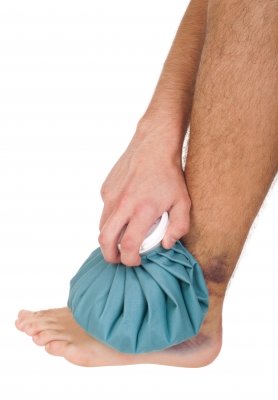Even while formal evaluation cannot be replaced, it's surprising how many conditions a few simple cares like hydrotherapy can benefit. Yet optimal health only comes when the needs of our whole being are met. While we often hear about physical and mental health, spiritual needs tend to be overlooked. This site takes its inspiration from the healing ministry of Christ, who cared for people in mind, body, and spirit. For more about how water provides symbolisms that explain his spiritual healing influence, or other spiritual questions, see this post at my other website, www.CosmoQuestions.com.
Hydrotherapy Techniques

See below for techniques links!
We often take some of these techniques for granted, such as a taking hot shower or hot tub soak. However, there’s more too doing hydrotherapy than you might realize. There are techniques to follow in order to have the best outcome and avoid adverse reactions. For example, most hot treatments should be finished with a cool or cold rinse in order to close the pores, shrink surface blood vessels and stop sweating which could lead to chills, dizziness or other adverse reactions. The final cold rinse also boosts the immune system and is a good finish for the technique. Besides these techniques, be sure to also check the information provided on the hydrotherapy guidelines page for questions about diseases or conditions that certain hydrotherapy techniques might be contraindicated for, as well as hydrotherapy general guidelines for how to do it and potential adverse reactions. And of course, be sure to seek the advice of your primary care physician if you have medical conditions or are taking any medications.
Hydrotherapy techniques can be divided into categories by 1) temperature (hot, cold, contrasting or neutral) and 2) area (localized vs. whole body).
- Hot techniques are typically relaxing, help stimulate the circulation and immune system, and reduce pain.
- Cold techniques are invigorating and reduce swelling as well as pain.
- Contrasting techniques stimulate blood circulation by alternately dilating and constricting blood vessels in response to hot and cold.
- Neutral techniques are balancing and calming.
- Local Hydrotherapy includes techniques that effect a small, localized area of the body. These techniques include things like; cold compress, ice pack, hot foot bath, moist hot pack/ fomentation, steam inhalation, sitz bath, contrast immersion soaks, etc.
- Whole Body Hydrotherapy includes techniques that involve the whole body or enough of the body to have effects on the whole body. These techniques include things such as; steam bath, sauna, hot tub bath, cold tub bath, neutral bath, hot half bath, and contrast shower.
Techniques Links
Hot Foot Bath... The first technique we would like to introduce is the hot foot bath. The hot foot bath is considered the most basic and most commonly used of all hydrotherapy techniques and is very simple and convenient. It also has profound physiological effects that have been demonstrated through research. Click here to see the Hot Foot Bath technique.
~
Moist Hot Pack/Fomentation... This technique provides most, steaming which can produce relaxation in the muscles, increase flexibility and have beneficial effects on blood circulation. Using hot packs is appealing to many people due to the fact that it is a non-invasive, non-pharmaceutical intervention for pain. Click here to see the Moist Hot Pack/Fomentation technique.

~
Cold Compress... A cold compress is a cloth dipped in ice water and wrung out, then applied to the skin. Such a simple technique provides a convenient and safe way to treat some superficial conditions of the skin, such as allergy/itching, and can also have reflexive effects to reduce headache. Click here to see the Cold Compress technique.

~
Russian Steam Bath... With this you don't have to leave home for a full body spa! It is different than a steam room because you can keep your head out of the steam, which increases tolerance for the technique and allows you to enjoy it more. And, you can do it with simple household equipment, such as a bed sheet and electric tea kettle. Click here to see the Russian Steam Bath technique.

~
Ice Pack... This technique can reduce swelling caused by injury by causing injured blood vessels to constrict, thus preventing further leakage of blood into the surrounding tissues. It also may reduce pain by having analgesic effects on the nerves. Click here to see the Ice Pack technique.

~
Steam Inhalation... This is a moist heat method which is extremely easy to do and can partially relieve discomforts associated with colds and flu, such as nasal congestion, sore throat, cough, etc. The method can also be used for skin and facial beauty. Click here to see the Steam Inhalation technique.

Ice pack and steam kettle images courtesy of FreeDigitalPhotos.net.
~
This website is in development,
we appreciate your patience! Please check back for further updates.
It should be noted that hydrotherapy treatments can result in serious injury or complications under some circumstances. Prior medical advice should always be sought and extreme caution taken when performing any kind of hydrotherapy treatments for individuals with chronic diseases or decreased skin sensitivity. Hydroreference.com does not recommend the use of hydrotherapy for any condition without prior consultation with a physician or qualified healthcare provider.
